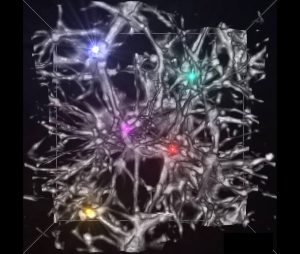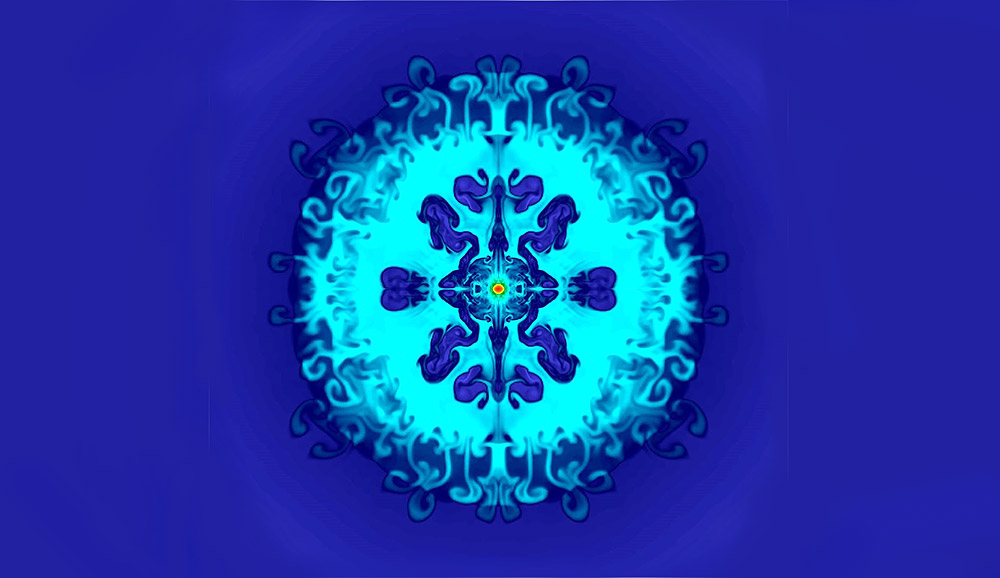Contradiction between observation and theory: The first stars in the universe were heavy giants, but they were not as massive as previous models assumed. This is shown by new simulations, in which gravitational perturbation splits gas in the early stellar cradle. This prevented the formation of very massive stars of up to 1,000 solar masses, which explains why no traces of such giant stars have been found so far.
When the first stars lit up in the universe more than 13.5 billion years ago, they changed our world forever. Because the stars of the third group ended the “Dark Ages” and created the first heavy elements in the universe. Their radiation also led to the reionization of primordial gases. Conventional wisdom holds that this first generation of stars formed in so-called haloes, clumps of condensed hydrogen and helium gas accumulated by local accretions of dark matter.
Contradictions in the first stars
But what did these first stars look like? How much did they weigh? The latter is crucial to the age and type of supernova of the star. Previous model simulations indicated that Group III stars were true giants, weighing between 100 and 1,000 solar masses. However, observational data contradict this.
“Direct observation of PopIII stars far exceeds the capabilities of even our large telescopes,” explain Cheng Yao Tang and Qi-Jong Chen of Academia Sinica in Taiwan. But there is indirect evidence that astronomers can extract element ratios for subsequent stellar generations. The elemental proportions of these very old, metal-poor stars indicate that the first stars had weights ranging from twelve to 60 solar masses. How can this contradiction be explained?
Is disorder to blame?
To answer this question, Tang and Chen tested a possible explanation using new high-resolution simulation models. “We focus on the fragmentation of primordial clouds caused by turbulence,” the astronomers explain. “We believe that turbulent flows at the center of these small haloes could be the missing piece of the puzzle that explains the discrepancy between observation and simulation.”
Such turbulence can spread out the dense centers of gas clouds and thus prevent or delay the complete collapse of the cloud. Instead of one massive giant star, this creates several dense clumps of gas that collapse into several smaller stars. To conduct the simulation, the researchers used a 3D model in which they tracked the evolution of two gas clouds with different masses, consisting of 76% hydrogen and 24% helium.
Multiple blocks instead of one giant gas ball
“In our scenario, the primordial gas is pulled by gravity to the center of these small haloes, and this process then creates a gravitational disturbance,” the astronomers explained. By varying the speed and strength of these flows, they were able to observe what happened after the gas was cooled and compressed.

Indeed, if primordial stellar cradles are disturbed by stronger gravitational perturbations, this prevents the complete collapse of gas clouds. “Our results show that turbulence with high Mach numbers and pressure first splits the clouds into several clumps, each with dense centers of about 23 to 175 solar masses,” the researchers say. Then, when these masses reach a critical density, they collapse under their own gravity.
Giant stars, but not extreme giants
This means that the first stars could also have had a much lower mass than assumed based on previous models. Instead of a supergiant star with a mass of up to 1,000 solar masses, several stars with masses ranging from 8 to 59 solar masses formed in the gas clouds divided by the turbulence. “This mass range roughly matches observations based on extremely metal-poor stars,” Tang and Chen say.
According to the astronomers, their scenario provides an astrophysically plausible explanation for why indirect observational data find more evidence of large, but not massive, stars in the third cluster. Accordingly, disturbance in much of the primordial star cradles could have prevented the formation of extreme giant stars. Only in some cases did such giants appear. (Monthly Notices of the Royal Astronomical Society, 2024; doi: 10.1093/mnras/stae764)
Source: Academia Sinica, Institute of Astronomy and Astrophysics (ASIAA), Taiwan
April 5, 2024 – Nadia Podbrigar

“Total coffee aficionado. Travel buff. Music ninja. Bacon nerd. Beeraholic.”







More Stories
Mysterious methane on Mars: NASA has a new theory
Reducing silent inflammation in the body with food
The stickleback in Lake Constance is not introduced from the outside